It’s Joel and Andrew here to guide you down the many paths that make up this edition of Ponytail Picks. Keep an eye on the person in front of you, and don’t remember: don’t feed the wildlife.
READ
3 very different guidebooks
Soul guide: Care of the Soul by Thomas Moore
I’ve lost count of how many times I’ve read this book. In it, Thomas Moore links common psychological themes with the mythologies of the Western world to help you look at both subjects more creatively.
I mentioned his take on the story of Narcissus during our short-lived book club, Monday Metamorphoses (RIP), but Care of the Soul is chock full of similar observations about art and life. And Moore shares it all without talking down to you the way so many books from this genre often do. Read it from cover to cover, turn it over, and read it again. It’s that good.
City guide: The Death and Life of American Cities by Jane Jacobs
Despite what you’re constantly being told about NFTs, AI, or whatever the next tech craze might happen to be, a quick read of The Death and Life of American Cities will remind you that, generally speaking, things tend to stay as they are.
Published in 1961, the book was meant as a railing critique of the “Garden City,” a then (and, seemingly, now) popular urban-planning concept that called for low population density, highly regulated land use, and space-creating green belts rather than the traditional city structure found in, say, New York City. Basically, the idea is responsible for all of the car-centred, personality-free suburbs that many of us grew up and/or live in.
When plans were put in place to turn Manhattan into one of these culture dead-zones, NYC native Jane Jacobs decided to put and end to it by writing a book. With help from many neighbours, her protestations worked, and the book in question became something of a calling card for anyone hoping to keep their city vibrant and walkable. If you’ve ever found yourself where the sidewalk ends and wondered, “What were they thinking when they designed this thing?” The Death and Life of American Cities is the book for you.
Story guide: A Swim in a Pond in the Rain by George Saunders
Even as an English Major, there was, for a long time, a corner of the literature world I always felt intimidated by: the Russians. Tolstoy, Dostevsky, Chekhov—their work was always defined as capital-I Important, and even as I tried to engage with them, I gave up too much of my mental space to that Importance instead of letting myself enjoy whatever it was I was reading.
helped put an end to that with A Swim in a Pond in the Rain, a book that’s billed to be about writing but is actually more about reading. In it, Saunders guides you through seven short stories by four Russian masters—Leo Tolstoy and Anton Chekhov, yes, but also a guy name Ivan Turgenev and, my favourite, Nikolai Gogol. By the end, you have a wholly new way to have fun with books. Inspiring!-AK
WATCH
Guides in the movies
Every journey needs a guide of some sort, whether it be a wizened old cowboy, a saber-toothed tiger, or perhaps simply your own heart. Here are some memorable movie journeys and the guides that led them.
The Lord of the Rings: The Two Towers (2002)
“Come on, Hobbits. Long ways to go yet. Smeagol will show the way.”
The way to what, though, I wonder?
Meek’s Cutoff (2010)
“We’re all just playing our parts now. This was written long before we got here.”
What role do guides play in our lives if our destination is never clear?
True Grit (2010)
“I would go on in your company if there were clear way to go. But we would be striking out blindly. Chelmsford is gone. We have chased him right off the map. There is nothing for it.”
When the guide himself gives up hope, what hope do we have?
Ice Age (2002)
“Still green, they headed north two hours ago.”
An excellent scene that encapsulates the central tension underlying the fun adventure tale. They have a guide but have conflicting feelings about him. Which is stronger—their need or their distrust?
-JB
LISTEN
5 albums guided by talk
We’re used to relying on narrators to guide us through books. One will pop up in a movie every now and then, too. But we often forget about the narrators in music. These five examples all use dialogue differently, and they all use it effectively, too. Pick one, take an hour or so this weekend, and enjoy the journey!
Tom Waits, Nighthawks at the Diner
If you know Tom Waits, you’re probably used to him in a sort of narrative position. His film roles, especially the ones directed by Jim Jarmusch, tend to place him on the outside of the story looking in. Well, that recurring crafty-guy-observing-everything-from-the-back-of-the-bar vibe is all thanks to Nighthawks at the Diner which introduced the character of Tom Waits to the world back in 1975.
Not your average live album, Nighthawks features its own set of songs, along with Tom’s stories and stage-quips. Part comedy album, part bar-jazz masterpiece, it’ll make you laugh, make you cringe, and eventually, it’ll win you over.
Gil Scott-Heron & Jamie xx, We’re New Here
Anyone intimately familiar with my music taste will know how much I love this Gil Scott-Heron album re-imagined by xx-member and producer extraordinaire Jamie xx. Like Mr. Waits, Gil lent his husky speaking voice to a few tracks on his last album of original material, I’m New Here. A year later, Jamie added interview clips and a modern twist to the record and, in doing so, introduced the Godfather of Rap to a new generation of white guys like me. I will forever be grateful.
Johnny Cash, The Rambler
This isn’t the only time the Man in Black broke up his chug-a-lug country music with a few words, but it might be the time he made the best use of the technique. The 1977 release puts you in the backseat of the Rambler’s pickup, letting you eavesdrop on the type of talk you might expect to hear between highway men 46 years ago. Yes: it gets awkward. Documents of the past often are.
Dangerdoom, The Mouse & the Mask
Narrative interludes are common in rap, but The Mouse & the Mask stands out in part because of what those interludes entail—characters from Adult Swim shows leaving desparate answering-machine messages for the two artists behind this masterpiece. The collab between superstar producer Danger Mouse and underground rap legend MF Doom might not need any sales support, but I’m glad kept the laughs in.
Harry Nilsson, The Point!
If you’re old enough, you might remember listening to stories from a record player when you were a kid. The album like this I recall best had “Mickey Mouse & the Beanstalk” on one side and the story of Johnny Appleseed on the other.
Harry Nilsson tried his hand at the concept in 1970 with The Point!, an absurd little tale about a round-headed boy making his way (with his dog Arrow) through a point-filled world. The result lives up to the “all” of the phrase “fun for all ages,” and happens to be one of my all-time favourites.
-AK
We’ve gone there and back again with this week’s media journey. If you feel led astray, let us know in the comments! Otherwise, we’ll see you next time as we float on into the wide-open theme of





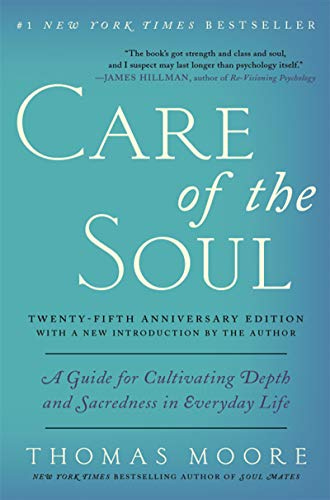

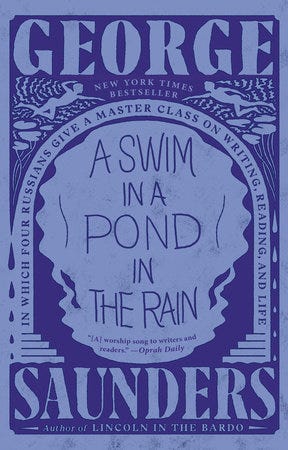
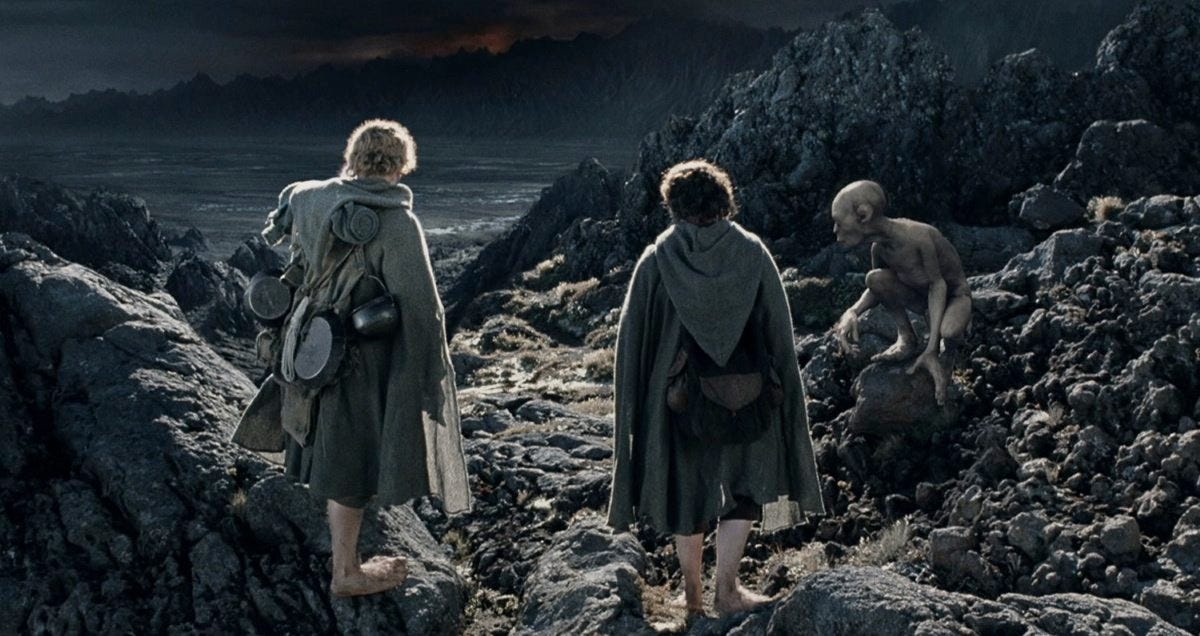
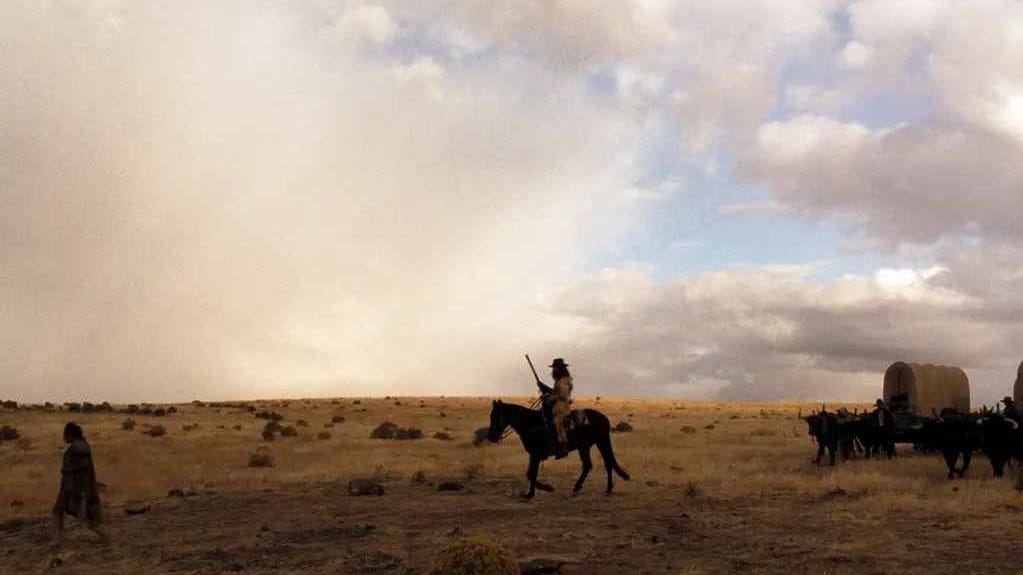
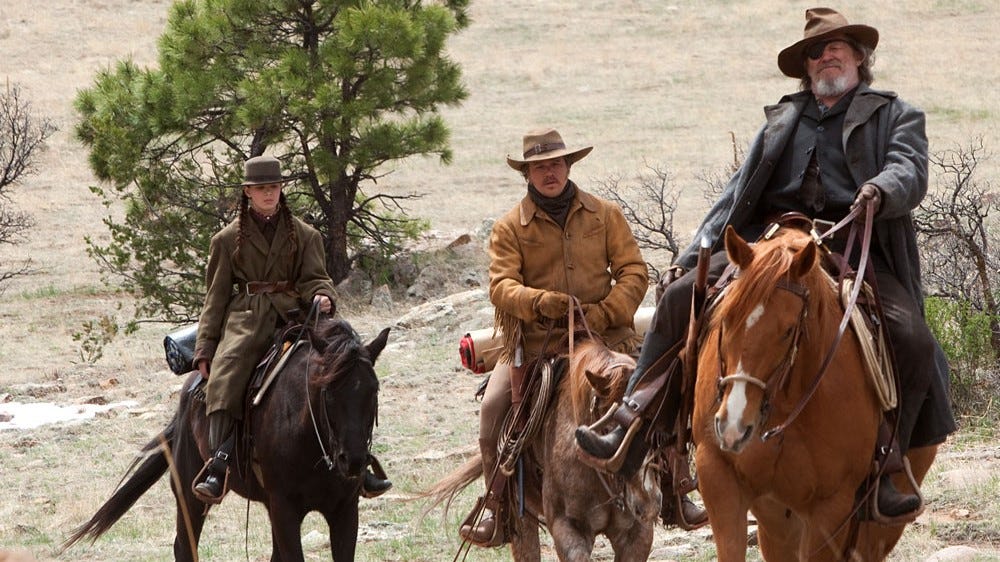
Two Towers holds up pretty well. Watched it again last Christmas.
Gonna check out that DANGERDOOM album. I listened to hip hop nonstop from like 1997 through 2002, then fell off completely and got stuck in that era for decades. I discovered MF DOOM around 2017 and I've been trying to catch up ever since. He was -- and still is -- a legend. Check out his collabs with CZARFACE if you're not familiar.
I love what you're both doing and am going to reach out with with a private note to you, Andrew. My email is <mltabor@me.com> and I'll write you from that email. Hope I don't end up in your spam.
On other notes: I too love Care of the Soul by Moore--read it when I shifted to writing full time. Saunders' Lincoln in the Bardo helped me through a horrific event in my own life. I should write him a fan letter and will some day when I find his email address.
xo Mary